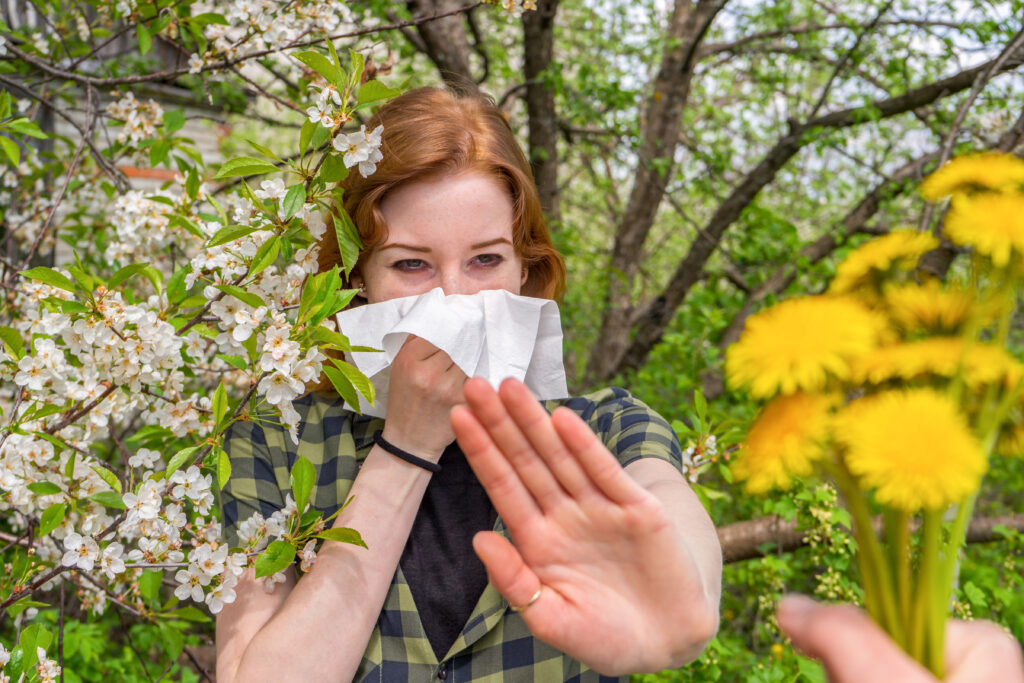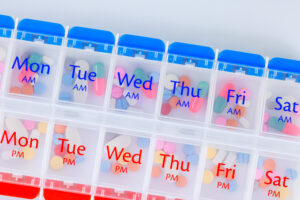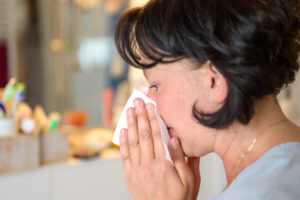Three times yesterday I watched the same scene unfold at my pharmacy counter: red-eyed customers shuffling up, voices raspy, asking some version of “What’s blooming right now?
I’m dying.” Welcome to April in New Jersey, where our state flower might as well be a box of tissues.
After 12 years behind the counter in Monmouth County, I’ve become something of an allergy detective.
I can tell from your symptoms whether you’re battling tree pollen (those itchy, swollen eyes), grass (the sneeze attacks that come in sets of five), or if it’s a mold day (that distinctive throat tickle that water won’t touch).
Let’s cut through the marketing hype and talk about what actually works in our unique corner of allergy country.
Why Jersey Makes Us Sneeze Differently

Seasonal Allergy To Flowering Plants Pollen
When patients move here from out west, they’re often blindsided by their first Jersey spring. “I never had allergies in Arizona,” they tell me, looking betrayed. I explain that our state sits in what allergists privately call the “perfect storm” region – dense deciduous forests to the west, ocean moisture to the east, and just enough urban pollution to irritate airways before the pollen even hits them.
The Jersey Shore presents its own special challenge. That refreshing salt air? It carries mold spores from marshy areas miles inland. The Pine Barrens release distinctive pollen that research shows triggers responses even in people who don’t typically suffer from tree allergies. And our legendary humidity creates the perfect delivery system, helping allergens stick to nasal passages rather than simply blowing away.
The Weather Whiplash Factor
Last March perfectly demonstrated what I call “weather whiplash” – when we hit 72 degrees on a Wednesday, then dropped to freezing by Friday. These temperature swings don’t just confuse our wardrobe choices; they send plants into panic-bloom mode, releasing pollen explosively rather than gradually. The result? Even veteran allergy sufferers get blindsided by symptom intensity.
I keep a notebook of precisely when different symptoms spike each year. Oak trees consistently trigger the first major wave, usually during that first 65+ degree week. Maple follows about ten days later. By Memorial Day, grass pollen dominates, lasting until July when ragweed begins its three-month reign of terror.
Real Relief: Beyond the Marketing Promises
When a bleary-eyed dad rushed in last week at 10pm looking for something – anything – to help his 9-year-old sleep through the night, I skipped the usual first-line recommendations. Sometimes the textbook approach isn’t what people need at 10pm on a Tuesday.
The Antihistamine Truth Nobody Tells You
Here’s what the commercials won’t say: antihistamines work dramatically differently from person to person. Your neighbor swears by Claritin while it does absolutely nothing for you? Both of you are right.
I’ve watched patients cycle through three different antihistamines before finding their “magic bullet.” Genetic differences in liver enzymes mean some people metabolize loratadine (Claritin) so quickly it barely helps, while others get 36 hours of relief. Cetirizine (Zyrtec) works beautifully for some but causes unbearable drowsiness in others.
My practical advice: Don’t assume the brand your mother used is right for you. Try each major antihistamine for three consecutive days before deciding it doesn’t work. And whatever you choose, take it consistently. These medications work best preventatively, building up protection rather than rescuing you mid-attack.
The Nasal Spray Revolution
The single biggest game-changer I’ve seen in fifteen years behind the counter isn’t some breakthrough drug – it’s teaching people how to actually use nasal sprays correctly. When patients tell me “I tried Flonase and it didn’t work,” further questioning reveals they were essentially spraying the inside of their nostrils rather than targeting the nasal passages.
The technique difference is dramatic: tilt your head forward slightly, aim the spray toward your ear (not straight up or back), and sniff gently during application. This seemingly small adjustment has turned non-responders into success stories within days.
For brutal Jersey tree pollen season, my recommendation is often a two-part approach: an antihistamine to handle the systemic symptoms plus a corticosteroid nasal spray for targeted relief. Start the nasal spray before symptoms hit full force – it’s not a rescue medication.
When to Break the Glass Ceiling
Sometimes over-the-counter options just don’t cut it, especially during peak Jersey ragweed season (mid-August through early October – the most brutal stretch in our allergy calendar).
Signs you should consider escalating to an allergist: when symptoms persist despite consistent use of maximum-strength OTC options, when you develop asthma-like symptoms during allergy season, or when allergies significantly impact your sleep for more than two weeks.
The immunotherapy options available today are nothing like the painful shot regimens of the past. Sublingual tablets that dissolve under your tongue can provide targeted relief for specific allergens common in our region.
New Jersey’s allergy seasons may be legendary for their intensity, but you don’t have to surrender your quality of life to them. With the right approach, you can do more than just survive our beautiful Garden State springs and falls – you might actually get to enjoy them.




